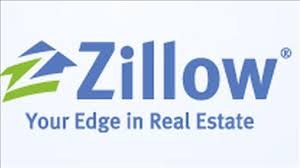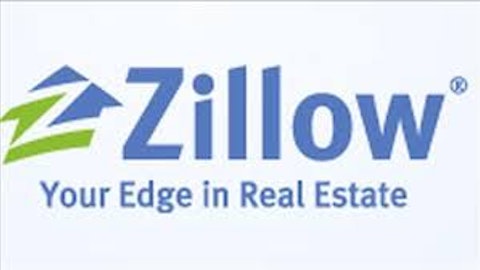
Up until now, the race has been “fixed”
Realtor.com, the website linked to Move Inc. (NASDAQ:MOVE), is the old “tortoise” built by committee, now running a race against two young “hares,” Zillow Inc (NASDAQ:Z) and Trulia Inc (NYSE:TRLA). Since Zillow Inc (NASDAQ:Z) and Trulia have become public companies, they have both been viewed and valued as disruptive and scalable internet business models. Wall Street has been treating them like they are not even running the same race as Move Inc. (NASDAQ:MOVE). By almost any measure, investors are discounting Move tremendously. Since price to earnings is not the best metric for young growth companies like Trulia Inc (NYSE:TRLA) and Zillow Inc (NASDAQ:Z), here is a chart showing the price to sales ratios for these three companies.

Z Price / Sales Ratio TTM data by YCharts
A different drummer
Realtor.com has just been marching along before, during and after the great real estate bubble of 2007 burst. It has a great domain name for internet search, and is affiliated with the National Association of Realtors, the NAR, a very powerful force and respected voice in the real estate industry. What went wrong?
Management by committee
NAR owns the domain Realtor.com; however, the site has been operated by Move since November 1996. Actually, the structure is more complicated. The operating agreement that allows Move to operate Realtor.com is actually an agreement between subsidiaries of NAR (the REALTORS Information Network, or RIN) and Move (RealSelect). NAR is also a minority shareholder of Move, owning less than 5% of the outstanding shares.
Restrictions in the agreement allowing Move to operate Realtor.com were finally lifted in a series of votes and meetings on July 25. This resulted in Realtor.com being able to:
- Display unlisted new homes and new-home communities.
- Display unlisted rentals.
- Obtain listings from entities that are not REALTOR®-owned and controlled, as well as from brokers who are not REALTORS®.
- Identify properties where a notice of default has been recorded, auctions of distressed properties, short sales, foreclosures, and bank-owned properties. (Listing brokers will have the option to opt out by calling the Realtor.com® customer care center.)
The listings in the Realtor.com website will continue to differentiate between Realtor listings and these other types of listings that now can be displayed. Some Realtors feel that this will help them stand out next to the unaffiliated listings. If marketed properly, this could make these changes a “win-win,” for both Move shareholders and the Realtor “brand.” In any event, this is a bold and controversial move, which points to how disruptive Zillow Inc (NASDAQ:Z) and Trulia have become.
Helps to level the playing field
Being able to go to Realtor.com and find out information on residences that are in distress or involved in foreclosure proceedings will help attract people who had to go to Zillow Inc (NASDAQ:Z) or Trulia Inc (NYSE:TRLA) for that information. Realtor.com already has an “accuracy advantage” in many markets due to receiving information directly from almost all of the multiple listings services, or MLS, in the U.S. Trulia and Zillow depend upon aggregators like ListHub and Point2Tech for listing information on millions of homes. In markets where homes are often snapped up almost immediately after being listed, buyers need timely, accurate information on what homes are actually available. Accurate sales information is also a key to this business model. According to Zillow, there are ten states that do not publicly report sales information, including Texas.





